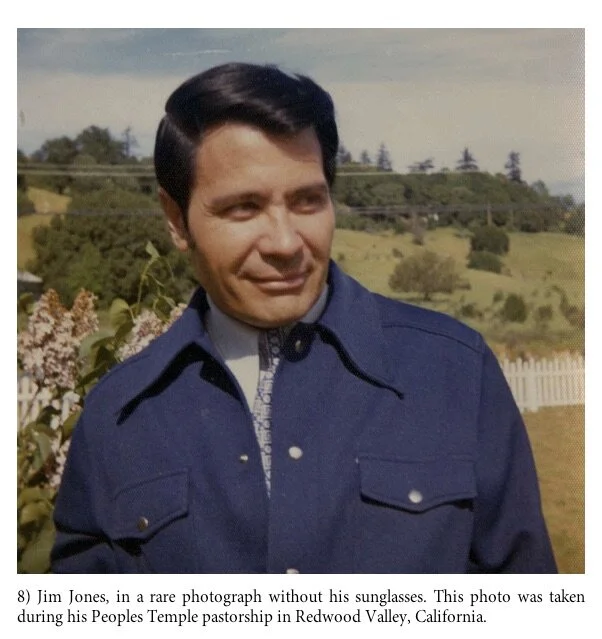East Of Eden
"A curious mix of the relevant and reverential"

(Image Source: Wikipedia)
It's time for another entry in the ongoing series "The Preachers", in which I look at some of the United States' most influential spiritual/religious leaders. All of the previous entries are of people who had their biggest impact in the 20th Century, even if they were born in the 19th. This post, however, will take us back to the Antebellum Period, when the Industrial Revolution was just taking off in the North and cotton was king in the South. Oh, and there were thousands and thousands and thousands of Black slaves.
The slaves, coming from various countries (mostly in west Africa), originally spoke different languages and followed different religions. From Kimberly Sambol-Tosco at PBS:
At the beginning of the transatlantic slave trade, African religious beliefs and practices were numerous and varied. In addition to a wide variety of polytheistic religions, a significant portion of the continent had for centuries fallen under Islamic influence. Despite this diversity, there were some common threads across cultural groups. For instance, West African societies, the largest source for American slaves, shared a belief in a Supreme Creator, a chief deity among lesser gods, to whom they prayed and made sacrifices. Through laws and customs honoring the gods, the ancestors of one's people, and the elderly, West Africans sought a harmonious balance between the natural and spiritual worlds. Further, they made music and dance vital components of their worship practices. Enslaved men and women kept the rites, rituals, and cosmologies of Africa alive in America through stories, healing arts, song, and other forms of cultural expression, creating a spiritual space apart from the white European world.
...

This TED-Ed video ties in nicely with my The Preachers series, and even mentions the Rev. Jim Jones. Check it out.

Anton La Vey and snake. (Image Source)
So far in this series, I covered Jim Jones who believed himself better than God (if there was, in fact, a supreme deity); Father Divine, who claimed to be God incarnate; and Aimee Semple McPherson, who despite being a twice divorced female pastor, held to the usual standards of historic, orthodox Christianity, i.e., The Trinity, Virgin Birth, Crucifixion and Resurrection of Christ, and salvation through the grace of God and faith in Jesus as Lord and Savior.
But for this entry, I'm going to step away from Christians (or those who started off that way... fun fact, Jones, Divine and McPherson all had early roots in the Methodist church), and over to the other side: Anton La Vey, who founded The Church of Satan in 1966 in California (um, another thing I noticed, is Cali's place of prominence in this series... Jones' Peoples Temple flourished there, and Semple's Angelus Temple was based in L.A.... even Divine's movement had success with satellite communities in the Golden State).
Reading up on La Vey, who died in 1997, is a challenge, because there's so much conflicting information. The man's actual birth name is even up for debate. A number of Christian sites add to this hodgepodge; while attempting to impress on readers the seriousness of La Vey and occultism in general, some of the articles play fast and loose with dates, quotes and the teachings of The Church of Satan. Augh... this does a great disservice to their entire message. If you can't get major tenets of their church right, why would people take anything you have to say to be true?
...

Aimee Semple McPherson, the Pentecostal Preacher who could've been a Silent Screen Star. (Image: Foursquare Church)
Aimee Semple McPherson was... so much. A Canadian missionary to China as a young newlywed; a widow with a sickly infant daughter a few years later; an acutely depressed and miserable mom of two and housewife in New England in marriage number two; and a traveling evangelist headlining packed tent revivals for Whites and Blacks, even in the segregated U.S. South. Oh yes, and that was all before she was 27 years old.
Thing is, when Aimee is remembered today (actually, if), she is reduced to the scandal that irrevocably altered her perception in the eyes of the public. She suddenly disappeared from a public beach in California in 1926, and was presumed by thousands to have drowned. After a month, she reappeared just as abruptly in Mexico, with claims that she been abducted by a trio of baddies looking for a steep payday by ransom. She ruined their plans by escaping out a window and walking for hours through the scorching desert. However, this tale was just too tall for many to accept, and alternate theories for Aimee's being M.I.A. abounded, most notably that she had been on a secret rendevous with a married lover.


(Image Source: NewsWorks)
I first heard the name "Father Divine" as a child from my mom, musing over her grandmother's occasional penchant for following (via correspondence, radio or TV) some rather interesting ministerial leaders. Her mom, my Nana, was no stranger to church hopping. She was a "spiritual seeker" decades before it became a thing. Raised Baptist, Nana left and checked out Jehovah's Witnesses, Catholicism and even Christian Scientists before settling on Holiness Pentecostal. BUT... Father Divine was way too much for her, and scoffed at her mom's interest in a man who would deign himself the Lord God incarnate. She needn't had worried; my great-grandmother's attention quickly flamed out for Reverend Major Jealous Divine.
More recently, I came across Divine's name last month when his widow, Mother Divine, passed away at the age of 91. The NY Times euologized:
...
(Image and Caption from "The Road to Jonestown: Jim Jones & The Peoples Temple")
I just finished "The Road to Jonestown: Jim Jones & The Peoples Temple" by Jeff Guinn and, really, I'm not trying to sound cliched or hackneyed here, but the book is stomach-churning, frightening and by it's end, downright disturbing. This is actually a compliment to Guinn; he vividly captures the horror of the story of Jonestown and the turbulent societal years that led up to it.
Speaking of hackneyed, despite occurring a few years before my birth, I was quite familiar with the Jonestown Massacre. At least, I thought I was. Much like my experience of watching the OJ Simpson documentary "Made in America" last year, what I "kind-of-sort-of-pick-up-from-pop-culture" is most definitely not the same as learning the actual facts of a case. Below are some facts that surprised me most:
...
